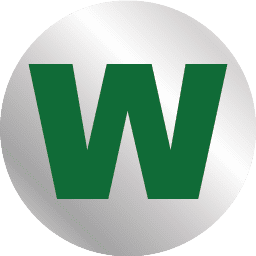What You Need to Know About PPP Forgiveness, the New Round of PPP Loans and Additional Stimulus for Your Business

In December 2020, the Federal government passed a new $900 billion stimulus that includes $284 billion in additional Paycheck Protection Program (PPP) funding for small businesses.
The legislation also calls for a more streamlined loan forgiveness process for some loans, as well as tax relief for all PPP loans that was not previously addressed in the CARES Act.
We checked in with Candice Caruso, SVP and Director of Government Guaranteed Lending for WSFS Bank, for tips and suggestions for small businesses as they navigate PPP Forgiveness and weigh applying for additional PPP funding, or want to apply for the first time.
What’s different about this new round of PPP funding that benefits small businesses?
At the heart of this new round of PPP funding, or PPP 2.0 as many are calling it, is a narrowed focus on helping small businesses that may have been left out of the CARES Act’s PPP loans, as well as small businesses that are still struggling and need more support.
The eligibility requirements for PPP 2.0 include lowering the cap on total employee count of a business to 300; makes 501(c)(6) organizations and other businesses including hospitals, local newspapers, TV and radio broadcasters, and housing cooperatives eligible to apply for the first time; excludes publicly-traded companies; and earmarks funds specifically for businesses with less than 10 employees that operate in low- and moderate-income areas.
Those applying for a second time are capped at $2 million in PPP funds and must demonstrate a quarterly revenue loss of 25% or more for the same quarter in 2019.
PPP 2.0 also provides some additional relief for the hard-hit hospitality industry, allowing hotels and restaurants to apply for a PPP loan of up to 3.5 times their payroll cost, compared to 2.5 times for most other industries.
PPP 2.0 applications are now open and businesses start applying by going to our CARES Act for Businesses resource page.
What impacts to PPP Loan Forgiveness and business taxes are expected?
The bill explicitly calls for costs associated with a PPP loan to be tax deductible, helping to clear up an area that was not covered in the CARES Act and that the IRS had initially ruled to be taxable.
Four new types of eligible forgivable expenses were also added, including PPE expenses associated with outdoor dining and supplier costs, and the bill creates the option for new covered periods.
Businesses that received an Economic Injury Disaster Loan (EIDL) will also no longer be required to deduct the grant from the PPP forgiveness amount. Finally, a new streamlined forgiveness application is coming from the SBA for all PPP loans under $150,000, including lower data and attestation burdens on small businesses that borrowed much less than their larger counterparts.
As a result, WSFS Bank has suspended accepting and processing forgiveness applications for loans under $150,000 until the new one-page application is available.
What else is included in the new stimulus package that can help small businesses?
There are several benefits to small businesses with SBA loans, including any Section 1112 subsidy payments from 2020 not being included in a business’s gross income tax. This applies for any subsidy payments in 2021 as well, which are expected to begin in February. $3.5 billion is allocated for debt relief payments of principal and interest (P&I) on small business loans amending the regulations and rules surrounding Section 1112 payments authorized by the CARES Act.
Additionally, there are enhancements to SBA Express Loans, with an increase in loan amounts from $350,000 to up to $1 million through September 30, 2021, and various enhancements to 7(a) loans including fee reductions and waivers that could be very beneficial for small businesses in need of cash flow.
What can small businesses do now to prepare?
The SBA has released information regarding the new round of PPP loans, including top-line overviews for new PPP loans and second draw loans.
We also encourage small business leaders to continually monitor the SBA website for updates and to contact their accountant or other business advisors for help preparing documents.
Remember, these services, when used for PPP purposes, are now tax deductible.

Helping you boost your financial intelligence.
Read our financial resources from your friends at WSFS.



